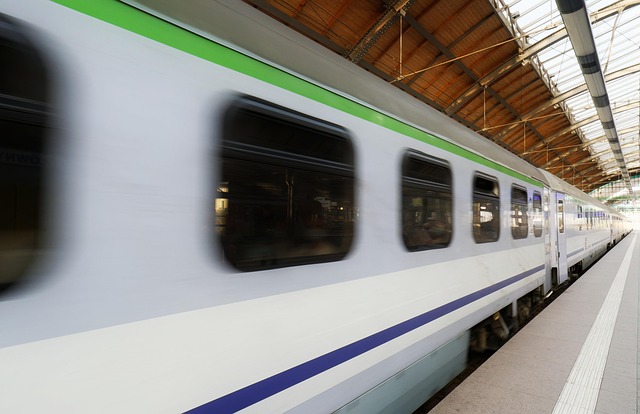Urban mobility hubs: designing seamless mode transfers
Urban mobility hubs bring multiple transport modes together to simplify commuting and reduce friction between trips. This article examines how hubs integrate micromobility, ticketing, electrification, ferries, shuttles, and routing to improve lastmile connections while supporting sustainability goals.

Urban mobility hubs are physical and digital meeting points where different transport options converge to make commuting more efficient and predictable. By concentrating services, information and amenities, hubs reduce transfer times and cognitive load for travelers. Well-designed hubs combine pedestrianized spaces, clear wayfinding, and integrated scheduling so that users can move smoothly between cycling, buses, ferries, shuttles, and rail without unnecessary delay or confusion. A focus on accessibility, safety, and data-driven operations helps ensure these nodes serve diverse local communities and adapt to changing travel patterns.
How do hubs enable multimodal commuting?
Multimodal hubs act as coordination points for various transport types, enabling commuters to switch modes with minimal friction. Physical layout matters: short walking distances between platforms, protected crossings, and sheltered waiting areas reduce perceived transfer costs. Operational alignment is equally important—synchronized timetables and shared information displays let riders plan seamless journeys that combine buses, ferries, shuttles, micromobility, and trains. Hubs can also host amenities such as bike parking, lockers, and passenger information centers, which encourage mode integration and support commuters who combine longer public transit segments with short first- or lastmile trips.
What role does micromobility in the lastmile play?
Micromobility—scooters, bikes, and shared e-bikes—addresses lastmile gaps by offering flexible, short-distance options that connect riders to main transit lines. Successful hubs provide secure, convenient docking or designated pick-up/drop-off zones, plus clear routing to nearby transit stops. Integration with multimodal journey planners and consistent rules for parking reduces clutter and improves safety. For operators and local authorities, balancing docked and dockless systems while offering incentives for responsible parking can make micromobility a reliable complement to buses, ferries, and shuttles, boosting overall system attractiveness and reducing private car dependency.
How do ticketing and contactless payments integrate?
Unified ticketing and contactless payments simplify transfers by removing barriers at boarding and reducing queues. Hubs that support a single payment ecosystem let users move across modes—micromobility, buses, ferries, and rail—without multiple tickets. Contactless bank cards, mobile wallets, and account-based systems can provide fare capping, time-based transfers, and discounted multimodal journeys. For operators, integrating back-end clearing and revenue sharing is critical. Transparent pricing structures and easy-to-access customer support at hubs help users understand options and trust the payment system during complex commutes.
How does electrification affect shuttles and autonomy?
Electrification reduces local emissions at hubs and enables quieter, more frequent shuttle services that link neighborhoods to main transit corridors. Charging infrastructure and energy management are key design considerations, including powered parking bays and fast-charging stations that fit operational schedules. Autonomous shuttles can extend service hours and offer flexible routing for low-demand times, but they require reliable connectivity, clear pickup points, and robust safety protocols within hub areas. Combining electrification with fleet telemetry supports predictive maintenance and operational efficiency while aligning hubs with sustainability targets.
How are routing and logistics coordinated across modes?
Coordinated routing and logistics maximize a hub’s effectiveness by aligning vehicle movements, passenger flows, and service frequencies. Real-time data from transit fleets, micromobility providers, and passenger apps feed centralized control systems that adjust routing to demand, manage vehicle dispatch, and help avoid congestion. Logistic considerations include space for layovers, loading zones for shuttles and ferries, and separation of freight activities where needed. Predictive analytics and demand-responsive routing can reduce idle times and improve headways, enabling smoother transfers and more reliable multimodal connections for commuters.
How can ferries and sustainability fit into hubs?
Ferries expand modal options in coastal and river cities, offering resilient alternatives for commuting and freight. Incorporating ferry berths into hubs requires attention to timing coordination, passenger access, and intermodal wayfinding to ensure short, sheltered transfers to buses or micromobility. From a sustainability perspective, electrified vessels and shore-power infrastructure reduce emissions and noise near hubs. Integrated planning that considers energy sources, modal share targets, and environmental impact assessments helps ensure that ferry services enhance connectivity while contributing to broader sustainability objectives for urban transport networks.
Well-designed urban mobility hubs bring infrastructure, operations, and user-facing services together to make transfers predictable, comfortable, and efficient. Attention to physical layout, unified ticketing and contactless payments, micromobility integration, electrified fleets, coordinated routing, and sustainable options like ferries improves the commuter experience and supports modal shift away from private cars. As cities plan and retrofit hubs, aligning technical systems with inclusive design and local logistics will be essential to achieving lasting improvements in urban mobility.





